SNORD88B promotes proliferation and invasion of trophoblast by regulating G3BP1 m6 A modification and alternative splicing
- PMID: 40471366
- PMCID: PMC12141712
- DOI: 10.1007/s00018-025-05758-x
SNORD88B promotes proliferation and invasion of trophoblast by regulating G3BP1 m6 A modification and alternative splicing
Abstract
Background: Small nucleolar RNA (snoRNA) has recently been shown to play a key role in different diseases, but how snoRNA works to promote the biological behavior of trophoblast remains unclear.
Methods: The expression of snoRNA in the placental villi of females were detected by RNA-seq and qPCR. RNA immunoprecipitation (RIP), RNA methylation co-immunoprecipitation (Me-RIP), and cell experiments were used to explore the molecular mechanism of SNORD88B in regulating the function of villous trophoblasts.
Results: SNORD88B was down-regulated in the placental villi of patients with spontaneous abortion, while the overexpression of SNORD88B could promote the proliferation, invasion, and migration of villous trophoblast cells. Mechanistically, SNORD88B directly binds to m6A methyltransferase METTL14 to regulate the m6A modification of G3BP1 mRNA and enhances its mRNA stability by recruiting the reader IGF2BP2. Besides, SNORD88B also regulates the alternative splicing of pre-G3BP1 by recruiting splicing factors SRSF1 and U2AF1, which ameliorates the expression of its effective transcripts to further promote the expression of G3BP1 protein.
Conclusions: We investigated the functional roles and the underlying regulatory mechanisms of SNORD88B in the enhancement of villous trophoblasts' development and that under-expressed SNORD88B could contribute to the maldevelopment of placental villi, which may be related to spontaneous abortion.
Keywords: Alternative splicing; Early pregnancy loss; G3BP1; M6 A modification; SNORD88B.
© 2025. The Author(s).
Conflict of interest statement
Declarations. Ethics approval and patient consent: The Ethics Committee of the third affiliated Hospital of Guangzhou Medical University approved the use of human tissue in this study. Informed consent was obtained from all patients. Conflict of interest: The authors declare no competing interests.
Figures
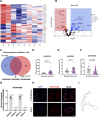

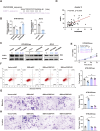
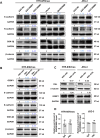
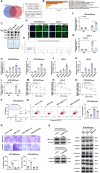
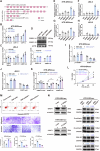

Similar articles
-
circFTO binding with IGF2BP2 regulates trophoblast cells proliferation, migration, and invasion while mediating m6A modification of CCAR1 mRNA in spontaneous abortion.BMC Mol Cell Biol. 2025 Jul 2;26(1):21. doi: 10.1186/s12860-025-00546-8. BMC Mol Cell Biol. 2025. PMID: 40604397 Free PMC article.
-
The noncanonical RNA-binding protein RAN stabilizes the mRNA of intranuclear stress granule assembly factor G3BP1 in nasopharyngeal carcinoma.J Biol Chem. 2024 Dec;300(12):107964. doi: 10.1016/j.jbc.2024.107964. Epub 2024 Nov 5. J Biol Chem. 2024. PMID: 39510185 Free PMC article.
-
METTL3 and IGF2BP2 coordinately regulate FOSL1 mRNA via m6A modification, suppressing trophoblast invasion and contributing to fetal growth restriction.FASEB J. 2024 Nov 30;38(22):e70154. doi: 10.1096/fj.202401665R. FASEB J. 2024. PMID: 39565355 Free PMC article.
-
The roles of G3BP1 in human diseases (review).Gene. 2022 May 5;821:146294. doi: 10.1016/j.gene.2022.146294. Epub 2022 Feb 14. Gene. 2022. PMID: 35176431 Review.
-
The multi-functional RNA-binding protein G3BP1 and its potential implication in neurodegenerative disease.J Neurochem. 2021 May;157(4):944-962. doi: 10.1111/jnc.15280. Epub 2021 Jan 8. J Neurochem. 2021. PMID: 33349931 Free PMC article. Review.
References
-
- Jurkovic D, Overton C, Bender-Atik R (2013) Diagnosis and management of first trimester miscarriage. BMJ 346:f3676 - PubMed
-
- Ogasawara M, Aoki K, Okada S, Suzumori K (2000) Embryonic karyotype of abortuses in relation to the number of previous miscarriages. Fertil Steril 73:300–304 - PubMed
-
- McNamee K, Dawood F, Farquharson R (2012) Recurrent miscarriage and thrombophilia: an update. Curr Opin Obstet Gynecol 24:229–234 - PubMed
-
- Kumar S (2011) Occupational, environmental and lifestyle factors associated with spontaneous abortion. Reprod Sci 18:915–930 - PubMed
MeSH terms
Substances
Grants and funding
LinkOut - more resources
Full Text Sources
Miscellaneous

